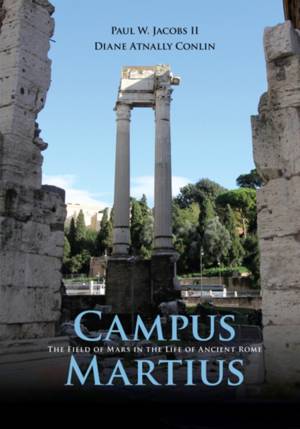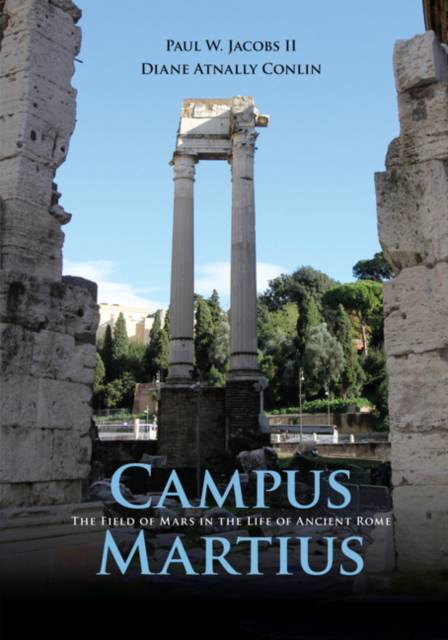
- Afhalen na 1 uur in een winkel met voorraad
- Gratis thuislevering in België vanaf € 30
- Ruim aanbod met 7 miljoen producten
- Afhalen na 1 uur in een winkel met voorraad
- Gratis thuislevering in België vanaf € 30
- Ruim aanbod met 7 miljoen producten
Zoeken
Campus Martius
The Field of Mars in the Life of Ancient Rome
Paul W Jacobs, Diane Atnally Conlin
Paperback | Engels
€ 69,45
+ 138 punten
Uitvoering
Omschrijving
A mosquito-infested and swampy plain lying north of the city walls, Rome's Campus Martius, or Field of Mars, was used for much of the period of the Republic as a military training ground and as a site for celebratory rituals and occasional political assemblies. Initially punctuated with temples vowed by victorious generals, during the imperial era it became filled with extraordinary baths, theatres, porticoes, aqueducts, and other structures - many of which were architectural firsts for the capitol. This book explores the myriad factors that contributed to the transformation of the Campus Martius from an occasionally visited space to a crowded center of daily activity. It presents a case study of the repurposing of urban landscape in the Roman world and explores how existing topographical features that fit well with the Republic's needs ultimately attracted architecture that forever transformed those features but still resonated with the area's original military and ceremonial traditions.
Specificaties
Betrokkenen
- Auteur(s):
- Uitgeverij:
Inhoud
- Aantal bladzijden:
- 268
- Taal:
- Engels
Eigenschappen
- Productcode (EAN):
- 9781107664920
- Verschijningsdatum:
- 19/01/2015
- Uitvoering:
- Paperback
- Formaat:
- Trade paperback (VS)
- Afmetingen:
- 175 mm x 251 mm
- Gewicht:
- 589 g

Alleen bij Standaard Boekhandel
+ 138 punten op je klantenkaart van Standaard Boekhandel
Beoordelingen
We publiceren alleen reviews die voldoen aan de voorwaarden voor reviews. Bekijk onze voorwaarden voor reviews.











